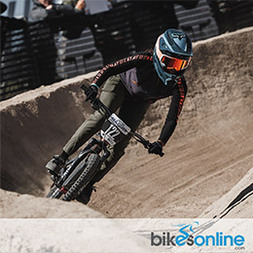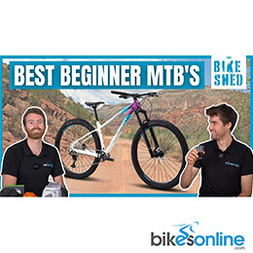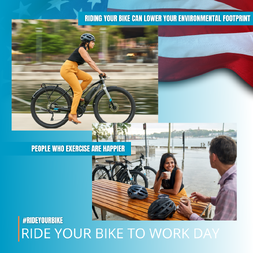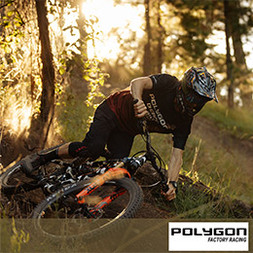Essential Bike Accessories for Every Cyclist
Explore the must-have bike accessories that enhance safety, comfort, and performance for every cyclist. Whether you're commuting or cruising, find out what essentials you need for a better ride. Explore the must-have bike accessories that enhance safety, comfort, and performance for every cyclist. Whether you're commuting or cruising, find out what essentials you need for a better ride.
Cycling, whether for recreation, fitness, or commuting, is more than just pedaling and steering. The right accessories can significantly enhance the experience, turning an ordinary ride into a journey of comfort and efficiency. For cyclists, accessories are not just about adding aesthetic value; they serve critical functions that can improve safety, performance, and enjoyment on every ride.
Choosing the right accessories is crucial, as they can protect you from potential hazards, help in navigating new routes, and even boost your bike's functionality. From helmets that safeguard your ride to lights that illuminate your path, each accessory plays a pivotal role. This guide will explore the essential bike accessories that every cyclist should consider, helping you to make informed decisions that enhance your riding experience, regardless of your cycling style or goals.
With safety enhancements, navigational aids, and tools for maintenance included in our list, you'll find everything you need to equip yourself for a safer, more enjoyable, and efficient cycling adventure.
Here are list of Bike Accessories for Every Cyclist
Safety Accessories
Ensuring safety while cycling should be every rider's top priority. Equipping your bike with the right safety accessories not only protects you but also enhances your visibility to others. Here, we'll delve into two essential safety accessories: helmets and lights with reflectors.
Helmets: A Must-Have for Head Protection
The helmet is the most crucial piece of safety equipment for any cyclist, as it protects your head in the event of an accident.
Importance of Wearing a Helmet:
Protection Against Head Injuries: Wearing a helmet reduces the risk of head injuries by absorbing the impact of falls or collisions.
Tips for Choosing the Right Helmet:
- Fit: Ensure the helmet fits snugly; it should sit level on your head and not rock forward, backward, or side to side. The chin strap should be tight enough that only one or two fingers can fit under it.
- Ventilation: Good ventilation is vital for comfort, especially on long rides or in warm weather. Look for helmets with multiple vents that promote airflow.
- Safety Features: Consider helmets with advanced safety features like MIPS (Multi-directional Impact Protection System), which helps to reduce rotational forces during an impact.
Lights and Reflectors: Be Seen, Be Safe
Visibility is key to safety during low-light conditions or night riding. Lights and reflective gear make you more visible to other road users.
Types of Lights:
- Front Lights: Essential for lighting the path ahead and making you visible to oncoming traffic. Choose lights that are bright enough to illuminate your way and alert others of your presence.
- Rear Lights: Typically red, these lights make you visible from behind and are crucial in traffic.
- Spoke Lights: Add an extra layer of visibility and style with lights that attach to your bike's spokes.
Reflective Gear and Its Importance for Visibility:
- Reflective Clothing: Jackets, vests, and even gloves can be equipped with reflective materials that shine brightly when hit by light, making you more visible.
- Reflective Tape and Decals: Can be added to your bike and helmet for increased visibility without affecting the functionality of your gear.
By prioritizing these safety accessories, you not only enhance your own protection but also contribute to safer cycling environments for everyone on the road.
Navigation Tools
Effective navigation is crucial for any cycling journey, whether you're exploring new trails or commuting through city streets. Modern technology offers sophisticated tools to help cyclists find their way easily and efficiently. Here we focus on two essential navigation aids: bike GPS devices and mobile mounts.
Bike GPS and Mobile Mounts
Navigating while cycling has been revolutionized by GPS technology, which offers numerous advantages over traditional paper maps.
Advantages of Using a GPS Device Over Traditional Maps:
- Real-Time Navigation: GPS devices provide real-time directions and adjustments if you stray from your route, which is something traditional maps cannot offer.
- Ease of Use: With a GPS, you can easily zoom in and out to get a better understanding of your surroundings without stopping to unfold and study a map.
- Additional Features: Many GPS devices for cycling come equipped with extra features such as speed tracking, distance covered, and even heart rate monitoring, adding significant value beyond simple navigation.
Options for Secure Mobile Mounts for Easy Navigation:
- Handlebar Mounts: These are among the most common types of mounts, offering a secure grip and easy visibility. They are adjustable to fit various phone sizes and often come with shock-absorbent features to handle bumps and vibrations.
- Stem Mounts: These mounts attach directly to the bike's stem, providing a central view. They are typically more stable than handlebar mounts and keep the device in a compact, less obtrusive position.
- Frame Bags with Phone Sleeves: For cyclists who prefer not to mount their phones directly in sight, frame bags with clear top sleeves allow for easy viewing of the screen while protecting the device from weather and sweat.
By incorporating these navigation tools into your cycling setup, you can enhance your riding experience with efficient route planning and real-time data, allowing for a smoother and more informed ride. Whether you opt for a dedicated bike GPS or a mobile mount to use your smartphone’s GPS capabilities, these tools are invaluable for any modern cyclist.
Comfort and Convenience Accessories
While cycling is an activity that benefits the mind and body, certain accessories can enhance the comfort and convenience of your ride, making it even more enjoyable and efficient. Here, we focus on two important types of accessories: cycling gloves and storage options like panniers and backpacks.
Cycling Gloves: Enhance Your Grip and Comfort
Cycling gloves are more than just a stylish accessory; they play a crucial role in comfort and safety.
Benefits of Wearing Gloves:
- Shock Absorption: Gloves equipped with padding reduce vibration and fatigue on longer rides, helping you maintain endurance and comfort.
- Better Grip: Sweaty hands can slip on the handlebars. Gloves ensure a reliable and consistent grip in various weather conditions.
- Protection: In the event of a fall, gloves protect your hands from cuts and abrasions. They also provide a barrier against sunburn and cold.
Panniers and Backpacks: Carry Your Essentials with Ease
Choosing the right storage for your belongings can significantly impact your cycling experience, especially if you commute or take longer trips.
Comparison of Panniers vs. Backpacks for Different Types of Rides:
- Panniers: Attached to the sides of the bike's rear rack, panniers distribute weight evenly and keep the rider's back free from sweat. Ideal for longer journeys and commuting as they don’t add strain to the back.
- Backpacks: Better suited for short rides or those who prefer not to install racks on their bike. Backpacks are versatile and can be used off the bike as well, though they might cause back sweat during longer rides.
Key Features to Look for:
- Water Resistance: Essential for protecting your items from rain and road spray. Look for materials like treated fabric or choose covers specifically designed for rain protection.
- Capacity: Consider the volume of gear you need to carry. Panniers can generally hold more and are ideal for shopping trips or camping gear, while backpacks might be sufficient for daily essentials.
- Ease of Attachment: Panniers should have a reliable mounting system that securely attaches to the rack without too much hassle. Backpacks should have adjustable straps to ensure a snug fit that doesn’t shift while riding.
Whether opting for gloves to enhance handling and protect your hands, or choosing between panniers and backpacks for carrying your essentials, these accessories significantly improve the comfort and functionality of your cycling experience.
Maintenance Tools
Keeping your bike in good working order is essential for ensuring a safe and enjoyable ride. Having the right tools on hand can make all the difference when you encounter issues on the road. Here, we'll cover essential tools for on-the-go repairs and discuss the advantages of different types of air pumps and inflators.
Portable Tool Kits and Puncture Repair Kits
Being prepared for common mechanical issues can save you from a long walk home. Carrying a basic tool kit and knowing how to handle a puncture are fundamental skills every cyclist should have.
- Essential Tools to Carry:
- Multi-Tool: Look for a multi-tool that includes various sizes of hex keys, screwdrivers, and a chain tool. This tool can handle most adjustments and repairs.
- Tyre Levers: Essential for removing the tire from the rim during a puncture repair.
- Patch Kit: Includes adhesive patches, sandpaper, and sometimes rubber cement for patching holes in the inner tube.
- How to Use a Puncture Repair Kit on the Go:
- Remove the Wheel and Tyre: Use your tyre levers to remove the tyre from the rim and locate the puncture.
- Prepare the Tube: Use the sandpaper to roughen the area around the puncture, which helps the patch adhere better.
- Apply the Patch: If using adhesive patches, simply peel and stick the patch over the punctured area. If using rubber cement, apply a thin layer of cement, wait for it to become tacky, then apply the patch.
- Reinstall the Tube and Tyre: Put the tube back inside the tyre, fit the tyre back onto the rim, and inflate the tyre to the recommended pressure.
Portable Air Pumps and CO2 Inflators
Choosing the right tool for re-inflating a tire mid-ride can depend on the type of cycling you do and your personal preferences.
Differences Between Air Pumps and CO2 Inflators:
Air Pumps: These are reliable and can be used multiple times, making them a staple for regular cyclists. They require manual pumping and are best for those who prefer a cost-effective, sustainable option.
CO2 Inflators: Provide a quick and easy way to inflate a flat tyre. CO2 cartridges offer a one-time, rapid inflation but can be more expensive over time and less environmentally friendly.
How to Choose the Right Option for Your Cycling Needs:
Consider Your Riding Style: If you often ride in remote areas or don't mind the physical effort, a portable air pump is a dependable choice. For racers or those who value speed and convenience, CO2 inflators might be the better option.
Weight and Space: Assess how much weight and space you're willing to allocate in your kit. CO2 inflators are compact and lightweight, ideal for minimalists or performance-focused riders.
By equipping yourself with the right maintenance tools and knowing how to use them, you can handle most common bicycle issues on your own, ensuring a smoother and more reliable cycling experience.
Performance Enhancers
For cyclists looking to optimize their performance and comfort during rides, certain accessories can provide significant benefits. This section focuses on hydration systems that keep you refreshed and bike computers that track your cycling metrics, helping you improve over time.
Water Bottles and Hydration Systems
Staying hydrated is crucial for maintaining optimal performance and safety while cycling, especially on longer rides or in hot weather.
Importance of Staying Hydrated While Cycling:
- Physical Performance: Dehydration can lead to decreased strength, reduced endurance, slower reaction time, and muscle cramps.
- Health and Safety: Proper hydration helps regulate your body temperature and prevents heat stroke and other heat-related illnesses.
Types of Hydration Systems: Bottles vs. Hydration Packs:
- Water Bottles: The most common hydration solution, easily attachable to your bike with a cage. Suitable for shorter rides or where water refill points are accessible.
- Hydration Packs: These are backpacks equipped with a water reservoir, or bladder, and a hose that allows for easy drinking while riding. Ideal for long-distance rides, mountain biking, or when fewer water refill options are available. They also offer the added benefit of storage space for other essentials.
Bike Computers: Track Your Performance
Bike computers are small electronic devices mounted on a bike that provide valuable data about your ride, helping you track improvements and plan your training.
Features of Bike Computers:
- Speed: Most basic computers can track your current, average, and maximum speed.
- Distance: They measure how far you've traveled, useful for training and planning long rides.
- Cadence: Higher-end models can monitor your pedaling rate, which helps in optimizing your effort and improving endurance.
- GPS Navigation: Some advanced bike computers offer GPS tracking to help navigate routes and track your ride precisely.
How Tracking Metrics Can Improve Your Cycling Performance:
- Goal Setting: By knowing your current performance levels, you can set realistic goals and gradually increase your targets.
- Training Efficiency: Monitoring different metrics allows you to adjust your training based on specific data, such as increasing your cadence or maintaining a particular speed.
- Motivation and Accountability: Keeping track of your progress can be a great motivational tool. It helps maintain a consistent training regimen and pushes you to beat your previous records.
By integrating these performance enhancers into your cycling routine, you can maintain better hydration, monitor and improve your riding performance, and ultimately enjoy a more effective and fulfilling cycling experience. Whether you're training for a race or simply looking to improve your fitness, these tools are invaluable for any serious cyclist.
Conclusion
Investing in quality bike accessories is not merely about enhancing the aesthetic appeal of your bike—it's about significantly improving your overall cycling experience. The right accessories can increase your safety, comfort, and efficiency, transforming every ride into a more enjoyable and productive journey.
Throughout this guide, we've explored a variety of essential accessories that cater to different aspects of cycling, from safety equipment like helmets and lights to performance enhancers such as hydration systems and bike computers. Each accessory has its unique benefits and can be tailored to meet the specific needs of individual cyclists, whether you're commuting, racing, or enjoying leisurely weekend rides.
As you consider upgrading or purchasing new accessories, reflect on your typical routes, the challenges you face, and what aspects of cycling you wish to enhance or simplify. For instance, if night riding is a regular part of your routine, ensuring robust lighting and reflective gear should be a priority. If you're training for a race or looking to improve your fitness, a bike computer with heart rate and cadence features might be indispensable.
Ultimately, the right accessories should align with your cycling lifestyle and goals. They should make your rides safer, more comfortable, and more aligned with your cycling aspirations. We encourage you to assess your needs carefully, read reviews, and perhaps even consult with fellow cyclists to make informed decisions about which accessories will best enhance your cycling experience.
Gear up with confidence and take your cycling to the next level with the right accessories tailored just for you. Enjoy the ride with the peace of mind that comes from knowing you are well-equipped for whatever lies on the road ahead.
Leave a comment
- Training Tips for a Beginner Cyclist
- Industry Reviews
- Mountain Bikes Buyer's Guide
- Polygon Siskiu T8 vs Collosus N9
- Superior XP919 Review: An Affordable Cross Country Marvel
- Mountain Bikes vs. Road Bikes: Which Is Safer for Your Cycling Adventures?
- Drop bar Buyer's Guide
- Are Electric Bikes Safe? Unpacking the Truth for New Riders
- Commuter Bike Guide
- Essential Bike Accessories for Every Cyclist
- Ultimate Guide to Buying Cycling Gear Online
- Is a Mountain Bike Good for Commuter Use? Exploring Versatility and Performance
- Is It Worth Buying an Ebike? Weighing the Pros
- Pinned With Polygon | The gang goes to Crankworx
- EWS #5: Burkville
- Sustainable Strategies
- Worth-it Blogs EP#3: Budget Hardtail Upgrades
- Worth-it Blogs EP#2: Hardtail Hitters
- The Bicycles Online's Company Fitness Challenge
- Bikes Online Does Sea Otter
- Choosing the Right Mountain Bike: Polygon Siskiu T6 vs. T9
- The Amazing Do-It-All Trail Bike: Polygon Siskiu T8 Review
- Polygon Siskiu D7 vs T7: Finding the Best Bike
- Guide to Polygon Siskiu T Mountain Bikes
- Upgrading Your Mountain Bike Suspension: A Guide to Fork Selection
- Bikepacking 101
- Fox vs. Rock Shox: A Comprehensive Comparison of Mountain Bike Suspension Giants
- 27.5 vs 29 Mountain Bike Wheels: An In-depth Comparison
- The Ultimate Guide to Choosing the Right Gravel Bike
 USA
USA AUS
AUS









